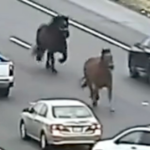Some things go perfectly together: Peanut butter and jelly. He-Man and She-Ra. Netflix and chill. And… dogs and petting, right?
Believe it or not, that’s what we — Raj Punjabi and Noah Michelson, the co-hosts of HuffPost’s “Am I Doing It Wrong?” podcast — learned when we recently chatted with Dr. Emily Levine, a board-certified veterinary behaviorist and the owner of Animal Behavior Clinic of New Jersey.
“Many dogs really don’t find being pet and hugged and kissed particularly nice — they just don’t enjoy it very much,” she told us.
“There are some dogs — don’t get me wrong — that love a good butt scratch or when you first come home or they haven’t seen you in a while, because they’re so excited to see you, that may mask how they really feel about it… but when you really watch a dog’s body language when they’re hanging out and doing their own thing, most of them are just tolerating [being petted] at best. There are lots of dogs where, quite frankly, they get so frustrated and annoyed that they start to growl and say ‘Hey, please, back off! I’m really not enjoying this.’”
Of course lots of furry friends do seem to enjoy physical affection, but if we’re dealing with a dog who doesn’t seem particularly enthused about it, should we refrain from doing it?
“This is where we have a little bit of a culture clash — human culture and dog culture. We have dogs… we love them… and I would say if they’re tolerating it, and as long as they’re not aggressing or it’s [not] making them very anxious — tail tucked, ears back — if they’re tolerating it, it’s a little bit like hugging your kid, especially as they become more a teenager, you know? Sometimes it’s like, you’re just going to hug them and kiss them and they just have to put up with it. So I don’t think it’s a terrible thing to pet and hug and kiss your pet if they tolerate it.”
So when shouldn’t we be doing it?
“If it clearly makes them anxious or it they’re using aggression as a strategy to say, ‘STOP,’ Dr. Levine said. “If we ignore the early signs — the growl, let’s say — then the dogs sometimes feel they have to escalate their message. Fair enough, because we aren’t getting it.”
Dr. Levine noted that hugging in particular can make dogs feel suffocated, so she suggested some alternative physical expressions of affection that might be better appreciated by your pet.
″[You can pet] the cheek and the chin… probably avoiding going along down the back… and you can keep it brief, too,” she said. Prioritizing the quality of your interactions over quantity might be the approach to take.
“It’s a relationship we have with our dogs — there’s always give and take — so as long as [petting] is not the only thing you ever do with your dog, let’s make sure they’re getting time to play, or getting time to do things they find enjoyable.”
So how do we determine what our dogs want — or don’t want? Dr. Levine advised that our best bet is to look at their body language.
“They’re constantly telling us how they feel. We just have to learn how to read it. We’re not born knowing that — no dog owner should feel guilty about not knowing how to read their dog. But there are lots of resources — body language videos and other resources — where you can learn how they are communicating … It’s the best thing really that a dog owner can do, to really get to know their dog, learn how they speak, because they’re speaking all the time.”
We also chatted about the one thing every pet owner should do while walking their dog, whether or not it’s safe for a dog to sleep with us in our bed and much more.
Need some help with something you’ve been doing wrong? Email us at [email protected], and we might investigate the topic in an upcoming episode.

